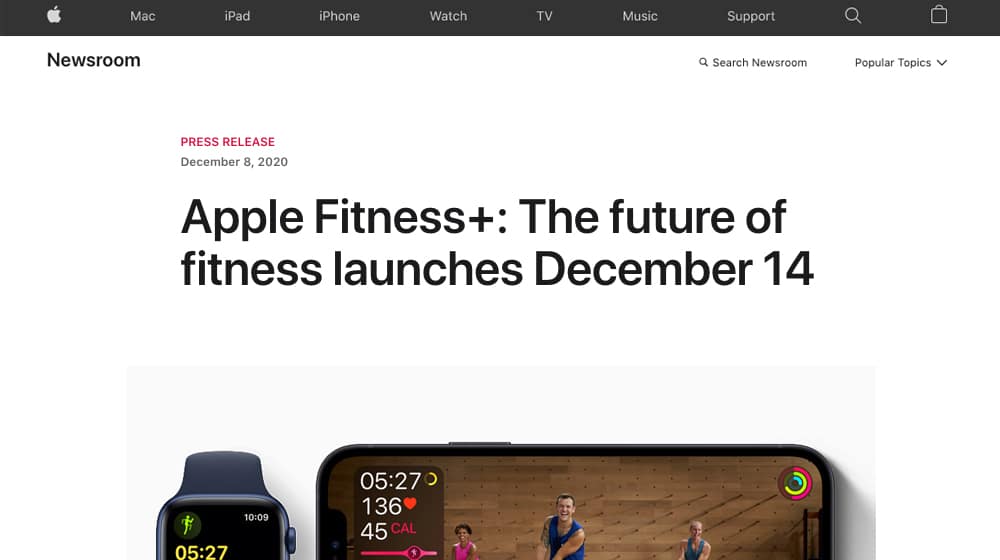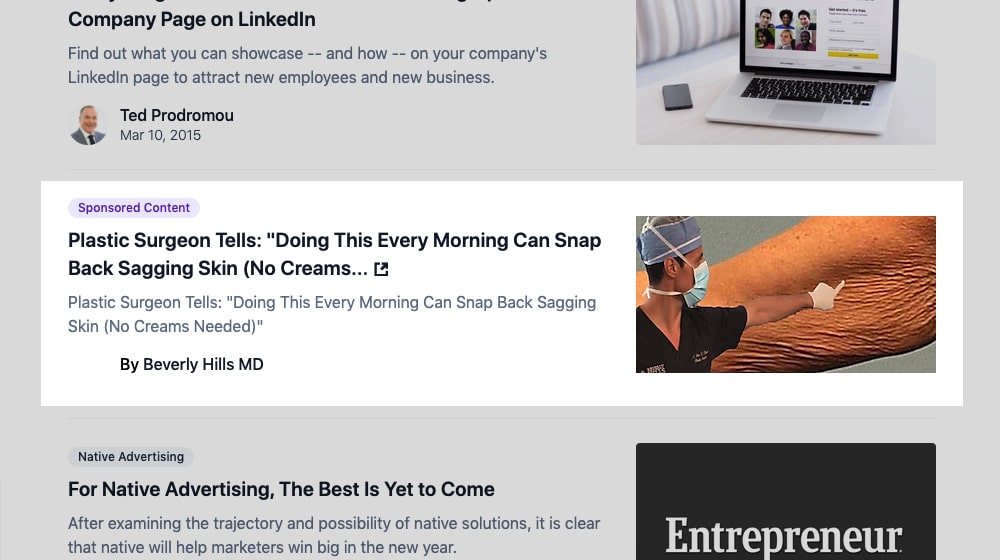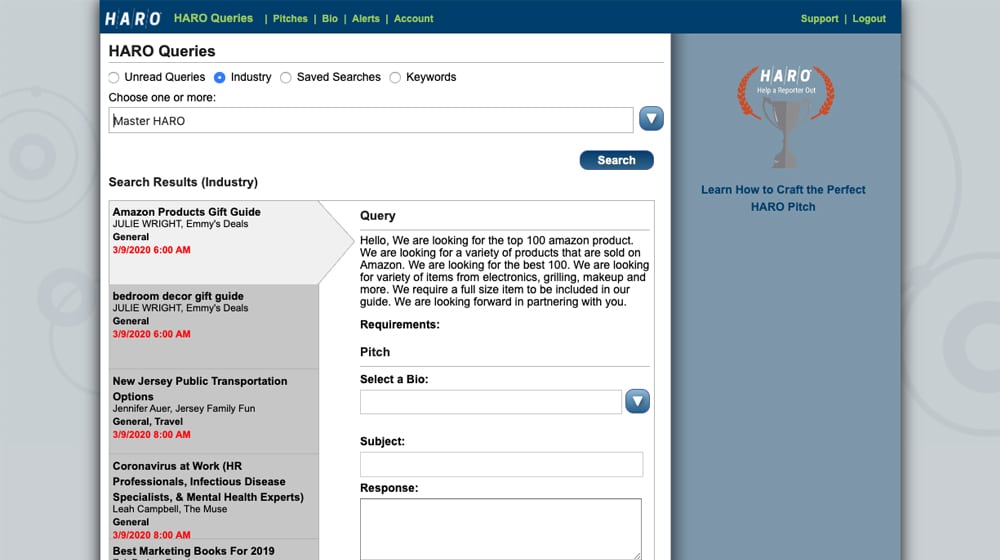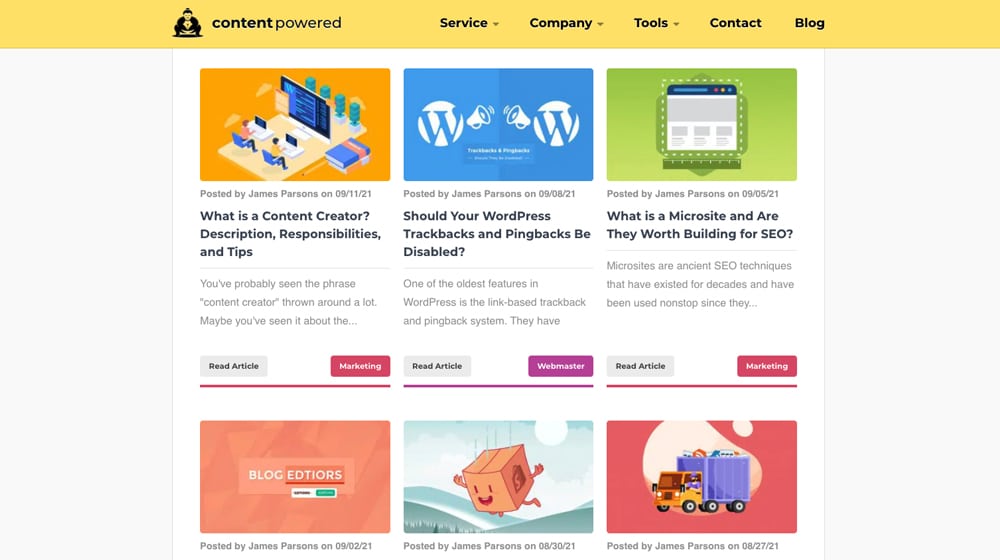As Seen On Logos: 6 Ways to Get Mentioned on Large Sites

Any time you're browsing the website of a business or SaaS service or what have you, you'll probably see a bunch of logos on their homepage. These logos are those of big brands and serve one of two purposes. Either:
- They're a partial list of big-name clients that use the company's service, or
- They're a list of big-name publications that have mentioned or featured the company.
For example, Textbroker is a content mill. If you visit their homepage, you can see company logo's from Yoast, Staples, eBay, and 1&1. These companies have purchased content through Textbroker, usually in their managed services.
Many websites, services, and businesses don't operate in a B2B space or in an area where NDAs make it impossible to show off a client list. In these cases, a similar social proof exists in coverage logos. Instead of client logos like Textbroker displays above, they'll have logos for sites like Forbes, HuffPo, Business Insider, and other prominent publications.
The purpose is very similar: to build authority and trust. If one of these trustworthy publications is writing about this service, they're probably reputable and high-quality, so you can feel good about contracting with them. Right? Just check out my homepage, and you'll see what I mean.

Now, the question is, how do you get coverage on those sites? I mean, sure, you could always slap logos on your site and lie about it – who is going to double-check? But you'll be stuck if someone ever asks for validation. Plus, getting coverage (and links) on those high-profile sites may be better for your E-A-T and SEO. After all, if you're mentioned on those sites, that's something to brag about. It does make you look more trustworthy, and there's a reason that so many companies are displaying them.
I've identified six ways to get featured on these influential sites, with associated pros and cons.
Let's take a look!
 30 Second Summary
30 Second Summary
You can get your business featured on major websites like Forbes and Business Insider in several ways. You can send out press releases, though they rarely work well for smaller news. You can pay for guest posts or sponsored content, but this can cost thousands and requires disclosure. You can pitch to journalists with HARO, which works better for mid-tier sites. You can try to become a contributor yourself, though many sites have closed this option. You can join paid programs like Forbes Councils, but they're expensive. Your best long-term option is to build your reputation naturally with excellent content and networking.
1: Press Release Marketing
First on the list is sending out a press release. Press releases are meant to be distributed and shotgunned to any relevant publication hoping that some of them will find the topic relevant and exciting. The goal of press releases is that large websites will cover it (or publish the press release as-is), which results in unlinked mentions and occasionally a backlink.
There are a few problems with this approach. The first and biggest of them is that many of the largest, best sites don't mess with press releases. For example, Forbes doesn't publish them unless it's specifically to roast them, so you're unlikely to get much coverage that way.

Now, if you have a highly relevant bit of news that someone who writes for Forbes would want to cover, you could send them a press release directly, and they might cover the topic, but that's going to be pretty rare. You'll have better luck with smaller publications, but the smaller the journal is, the less valuable its logo on your site will be.
One of the biggest problems with press release marketing is that the coverage it gets you isn't valuable. You can add the site logo to your site, but it's not coverage, it's just a publication of what you sent them, and they may not like it if you do so. Links are usually stripped or not allowed, or nofollowed, too.
And, of course, there's always the chance that you don't have anything newsworthy to write a press release about. For instance, I haven't developed new products or launched new services. What would I write a press release about?
"Content Powered Announces Business As Usual"
I doubt that would get much traction. Even if I did release something new, is it newsworthy? Most people don't care about press releases unless it's something massive like a new type of Tesla vehicle or the next generation of the iPhone. Still, if all you're after is the logo, you may be able to get mentioned in the press release section of some of these sites and meet the minimum requirement to show off their logos. It's a bit of a shortcut, and anybody with $100 can do this, but if it works, it works.
2: Paid Guest Posting
The second option you may have available to you is paid guest posting. Paid guest posting amounts to sponsored posts, though it may or may not be legitimized. Sites like Forbes have a system for this, which I'll discuss later. Other sites, like HuffPo or VentureBeat or something, are more likely to do one of two things.
The first is just straight-up sponsored posts. You go to the site, sign up for a sponsor account, pay a fee, and write a piece that they edit and publish as long as it's up to their standards and follows their rules.
The biggest downside to this is that it costs money. For some of the most significant publications, it can run you thousands of dollars. Maybe that's worthwhile to you, but it's often not.

The other drawback is that the content will have a prominent "sponsored content" warning – due to legal disclosure rules from the FTC – and that inherently removes value from a post. Anyone reading it is less likely to think it's trustworthy because you paid for it and wrote it, rather than being impartial, trusted third-party coverage.
Some influencer outreach platforms have journalists saying:
"I write for Forbes; pay me $XXXX, and I'll write about you."
They keep themselves anonymous because they'll be booted from the platform if Forbes finds out they were taking bribes for coverage. The other option for paid guest posting is under-the-table guest posting.

This option is still expensive, though often a little less so. On the other hand, you risk having all of your mentions purged if Forbes removes that author's account for taking payment to cover topics.
3: HARO Outreach
HARO, as you probably know, is a site that connects journalists with expert sources. I can sign up as a marketer, SEO expert, and content producer, and any journalist who wants the expert opinion of someone in my specialty can put up a query. I can pitch the query, wait for it to be accepted (or not), and get coverage from it.
This method is an excellent option for coverage in many mid-tier journals and publications. It's less useful for high-end publications, which are the ones you want to put the "as seen on" logos on your site because they're household names. I've been mentioned on small sites throughout niche industries, but the people who may be signing up to become new customers aren't likely to care about them or even have heard of them.

I've used HARO in the past, and I've seen the occasional query from sites like MarketWatch and Business Insider, but they're few and far between. They're also absolutely swarmed with pitches because they're authority sites in which everyone could use a citation.
On the plus side, citations through sites like HARO are outstanding. They give you a quote and, often, a link, and it's far more organic and valuable than a paid or sponsored post. It's excellent for thought leadership and helpful to receive a mention from these sites. It may even help your SEO.
There are also quite a few HARO-like sites out there. I compiled a list of them, and you might have better luck with high-end publications through a few others.
4: Becoming a Contributor Yourself
Another option (that's only vaguely an option these days) is to become a contributor to these significant sites yourself. For example, I used to write for HuffPo, Entrepreneur, and Inc in years past.
This method is excellent because, as a contributor, you have much more control over what you write and build up thought leadership and authority as an expert. I forever have those writing credits under my belt, even if I don't actively contribute to those sites anymore.

There are a couple of caveats, though.
It's still possible to contribute to many websites; it just takes persistence. For example, after emailing them and a few follow-up emails, I published a guest post on Search Engine Watch in the past year.
5: Using a Paid Contributor Account
Another option is to use the same as above on sites that offer paid contributor programs.
For example, I've used (and several of my clients use) the Forbes Councils system. The Forbes Councils system is an invite-only community of industry leaders in relevant groups who write for their channels on Forbes. I'm in the Los Angeles Business Council, specifically.
Having a Forbes writing credit under your belt is excellent, and using the logo is great, but anyone "in the know" knows you paid to get it. You also don't get as many benefits as the standard Forbes channels would. For example, Forbes Councils' posts don't get shared on the Forbes social media pages.

Forbes isn't the only site with a Council's equivalent. Fortune has Fortune Connect, for example, which gives you various benefits, including the ability to share posts on Fortune (though their page doesn't advertise if they let you publish to the website or not). A few other big-name sites have similar programs.
This strategy is a decent method if you can afford it, but they aren't necessarily accessible to most people. When you consider the amount of money you're spending on these sporadic publications, you have to consider what else you could spend that money on for even more impact.
6: Organic Blogging and Reputation Building
The final option, of course, is to get there naturally. Build your business, build your blog, become an industry resource and a recognized name, and wait for people who write for these large sites to decide to cover or cite your posts organically.

You can take a few steps to make this more likely.
- Cover topics that are highly relevant to the channels, authors, and editors for the publications you're targeting.
- Strive to be ranked #1 for those topics on Google, so when these authors do their research, they can't help but see you repeatedly.
- Follow, likes, retweet, share, and comment on posts made by these authors on social media. Don't do it with an expectation of a reply; just be part of the audience and community.
- Build links and a reputation through other sites. The more the big-name writers see you show up everywhere, the more likely they are to consider you part of the ecosystem and include you in their writing.
Of course, this method is inconsistent, time-consuming, and thankless. You have zero guarantees that you'll ever be able to reach the eyes and ears of these writers, and if you try to force it, you're just as likely to be ignored or blocked for it. It's tough! But, it's the most sustainable, ongoing, and beneficial of the options short of becoming an actual contributor yourself.
What methods have you used in the past to get these kinds of high-profile citations? Did I miss something? Let me know if you have something to add; I'm always open to ideas.



 30 Second Summary
30 Second Summary



Comments